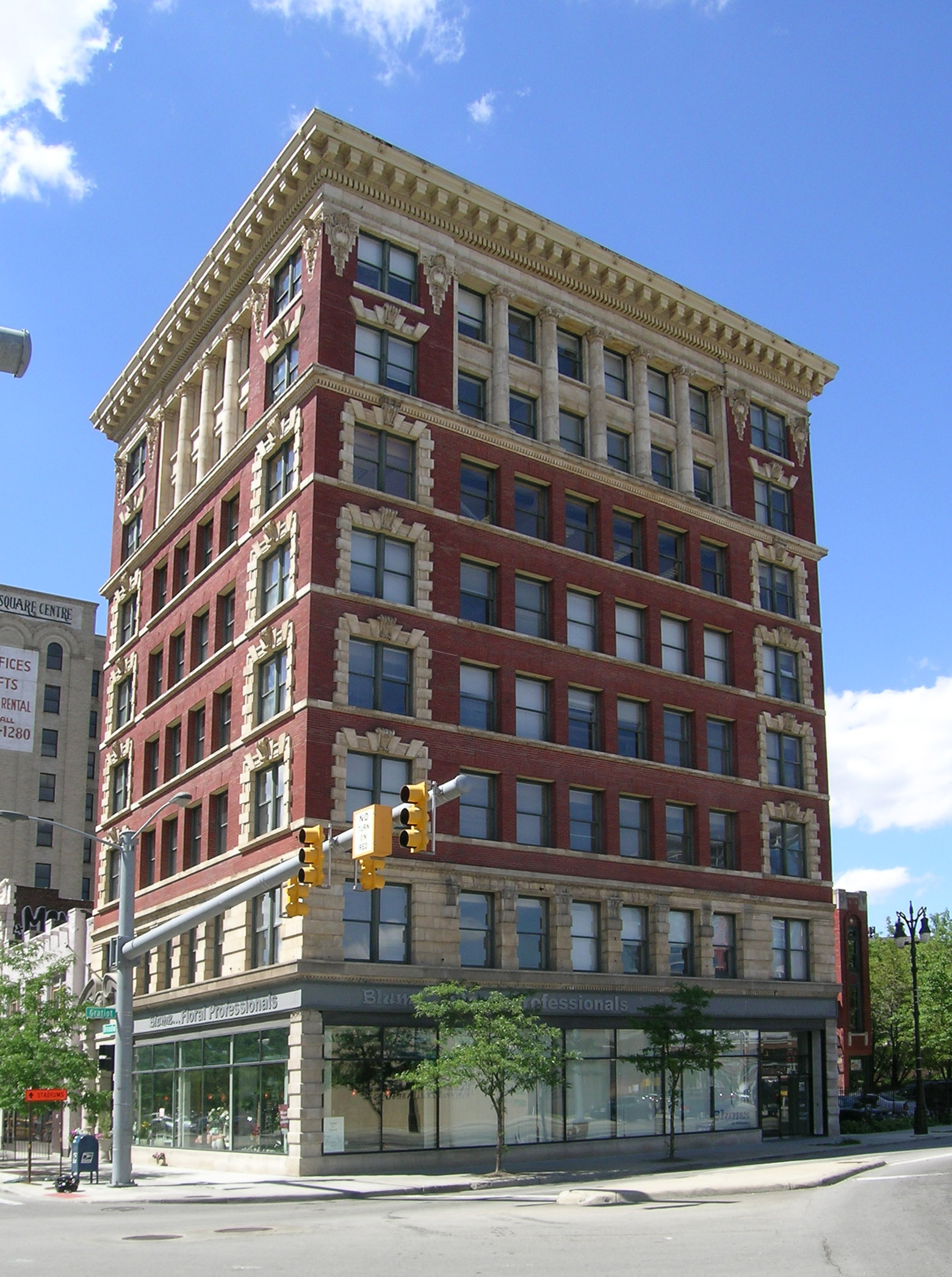- Breitmeyer-Tobin Building
Infobox_nrhp | name =Breitmeyer-Tobin Building
nrhp_type =

caption = Breitmeyer-Tobin Building from Gratiot
location=Detroit, Michigan
lat_degrees = 42
lat_minutes = 20
lat_seconds = 6
lat_direction = N
long_degrees = 83
long_minutes = 2
long_seconds = 45
long_direction = W
locmapin = Michigan
area =
built =1905
architect= Raseman & Fischer
architecture=Beaux Arts
added =March 10 ,1980
governing_body = Private
refnum=80001918cite web|url=http://www.nr.nps.gov/|title=National Register Information System|date=2008-04-15|work=National Register of Historic Places|publisher=National Park Service]The Breitmeyer-Tobin Building is an eight-story commercial building located at 1308 Broadway Street (at the corner of Broadway and Gratiot) in
Detroit ,Michigan . It is also known as the Tobin Building.History
The Breitmeyer-Tobin Building was built for John Breitmeyer Sons, Florists, who were at the time the leading florists in Detroit. [http://www.ci.detroit.mi.us/historic/districts/breitmeyer_bldg.pdf Breitmeyer-Tobin Building] from the city of Detroit] The firm's president,
Phillip Breitmeyer , served as the mayor of Detroit from 1909-1911.In 1926, the ownership of the building was transferred to the Peninsular Bank Company, and the building was renamed the Peninsular Bank Building. The bank failed, [http://www.detroit1701.org/Breitmeyer-Tobin.html Breitmeyer-Tobin Building] from Detroit1701.org] and ten years later, in the depths of the
Great Depression , the building was 75% unoccupied; the main tenant was the Metropolitan Life Insurance Company, who occupied the top floor. Metropolitan was notable for its willingness to write small insurance policies for African-Americans. At around the same time, the owners of the building opened up office space to rental by African-Americans; the building was one of the first downtown to do so.In 1944, Benjamin Tobin acquired the building, renamed it the Breitmeyer-Tobin Building, and marketed the office space to black professionals. Notable African-American firms had offices in the building, including the Brotherhood of Sleeping Car Porters (the largest Black union in America at the time); the law firm of Loomis, Jones, Piper and Colden; attorney Harold Bledsoe; optometrists William H. and Lloyd Lawson; and future judges Damon Keith and Hobart Taylor Jr.
The building has recently been refurbished, with commercial space on the first floor and apartments on the upper floors.
Description
The eight-story building is an unusual
Beaux Arts building from the turn of the century. [http://books.google.com/books?id=wjZIkchWX5AC Beth L. Savage, Carol D. Shull, United States National Park Service, National Conference of State Historic Preservation Officers, Preservation Press] , "African American historic places," John Wiley and Sons, 1995, ISBN 0471143456, 9780471143451, pp. 285-286] It includes glazedterra cotta elements.References
Wikimedia Foundation. 2010.
